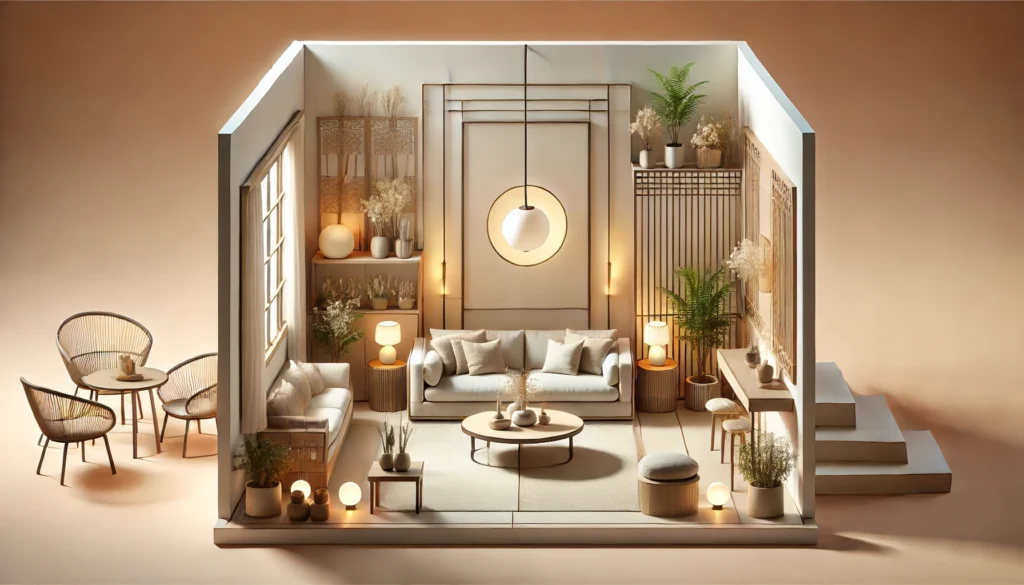The living room is one of the most important areas in any home because it’s where family members gather, guests are entertained, and relaxation takes place. In Feng Shui, the living room represents the heart of the home, where positive energy (Chi) should flow freely, fostering connection, relaxation, and harmony. By following the principles of Feng Shui, you can create a balanced and inviting living room that not only looks good but also feels good.
In this article, we will explore key Feng Shui principles to help you design a harmonious living room layout that supports the flow of positive energy, ensuring that the space feels welcoming, balanced, and peaceful.
1. The Commanding Position for Furniture Placement
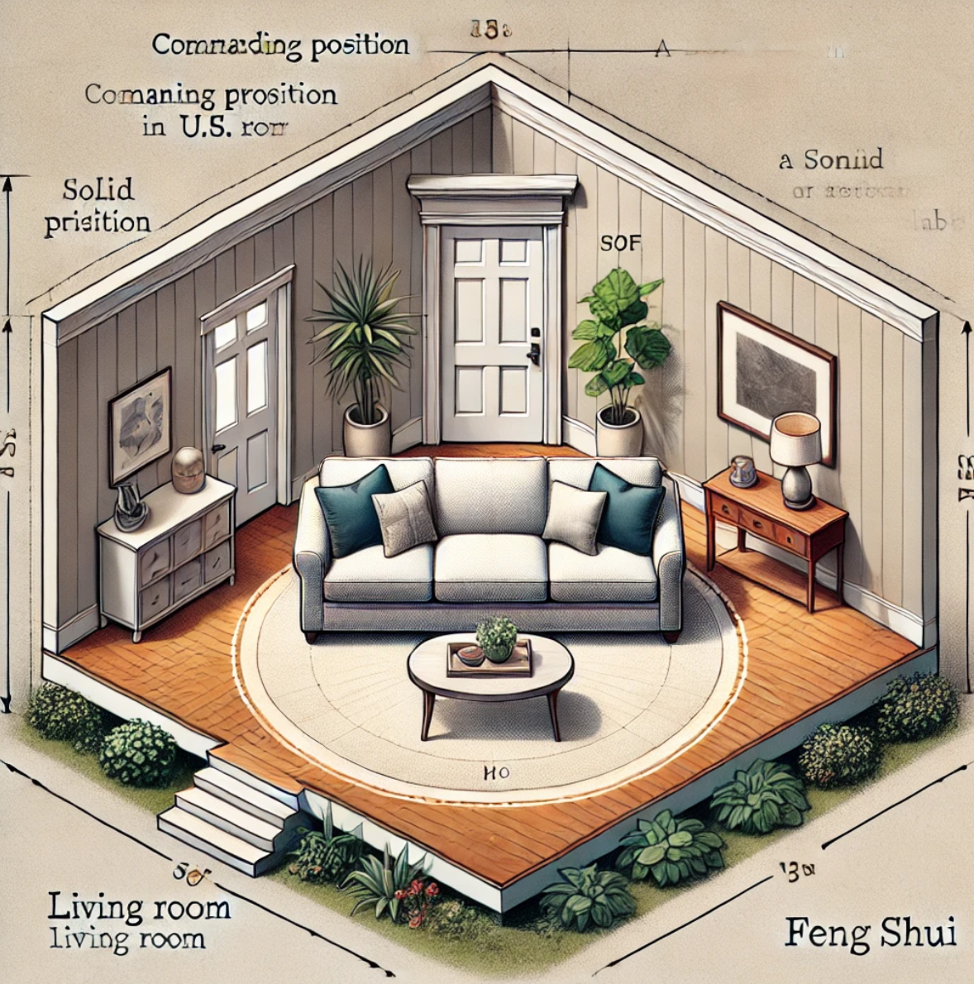
In Feng Shui, the “commanding position” is one of the core principles for arranging furniture, especially the seating in the living room. The commanding position refers to the spot where you have a clear view of the room’s entrance without being directly in line with the door. This positioning gives a sense of control and security, allowing you and your guests to feel at ease.
The main sofa or seating area should be placed in the commanding position. It’s ideal if the back of the sofa is against a solid wall, which provides support and stability. If your living room is too large or open for this, you can use a console table or large plants behind the sofa to create the sense of a stable backing.
Key Tips:
- Place the main seating area so that you can see the entrance of the room without sitting directly in line with the door.
- Avoid having your back to the door when sitting on the sofa.
- If the sofa can’t be against a wall, use a console table, shelf, or plants behind it to create stability.
2. Encouraging the Free Flow of Energy (Chi)
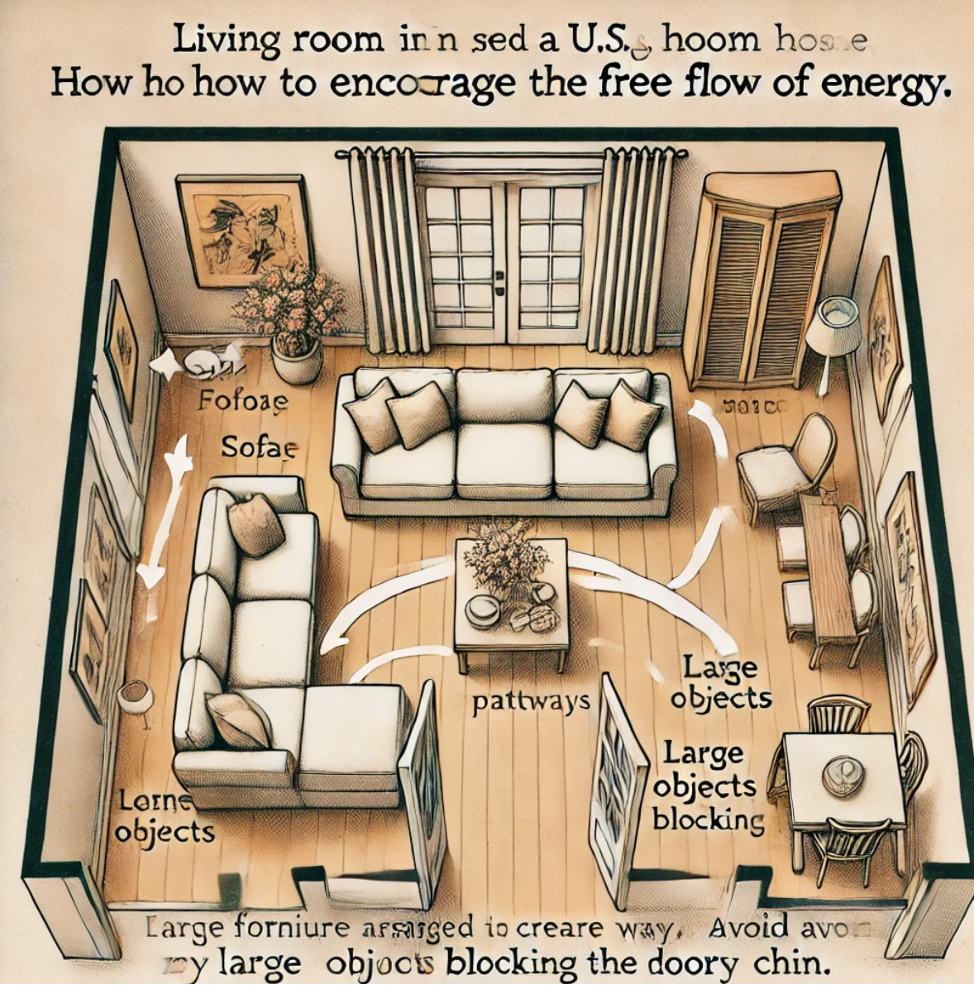
One of the most important goals in Feng Shui is to ensure the free flow of energy throughout the space. In the living room, this means arranging furniture in a way that doesn’t block pathways or obstruct movement. Chi should be able to circulate around the room easily, flowing smoothly between the doorways, windows, and seating areas.
Avoid placing large furniture pieces, like sofas or armchairs, directly in the path of the entrance or in the middle of the room, as this can block the flow of energy. Instead, create open and easy-to-navigate paths for people to walk through the room comfortably.
Key Tips:
- Avoid blocking doorways and windows with large furniture.
- Arrange furniture to promote ease of movement and open pathways.
- Keep the center of the room open to allow Chi to circulate freely.
3. Balancing the Five Elements in the Living Room
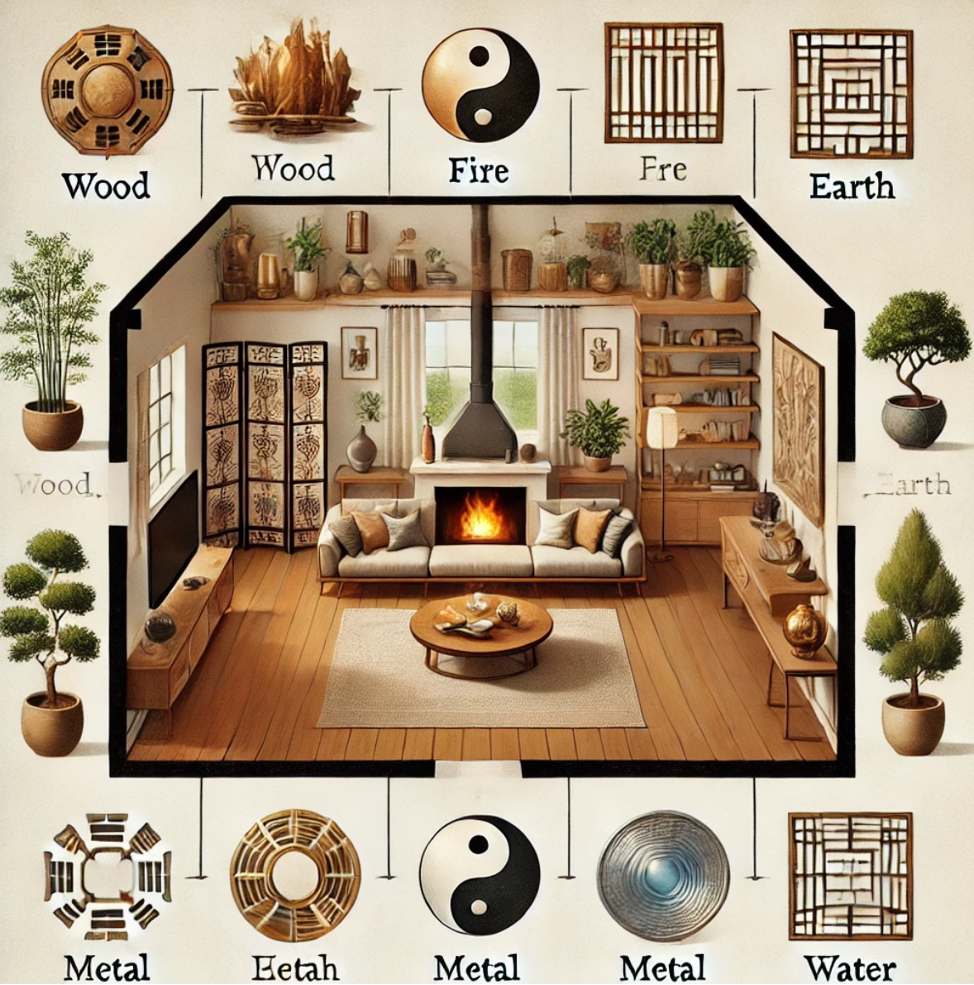
In Feng Shui, the five elements—Wood, Fire, Earth, Metal, and Water—should be balanced in the living room to create harmony and balance. Each element represents a different type of energy and can be introduced through color, material, or decoration.
- Wood: Brings growth and vitality. You can incorporate wood through wooden furniture, plants, or decor.
- Fire: Symbolizes passion and energy. Add candles, a fireplace, or accents in red or orange to introduce fire energy.
- Earth: Provides grounding and stability. Use earthy tones, clay pots, or stone decor to represent this element.
- Metal: Represents clarity and precision. Metal frames, sculptures, or metallic accents bring this energy.
- Water: Encourages calm and flow. Water features like small fountains, mirrors, or blue tones can introduce this element.
Aim for a balanced mix of these elements in the living room, as too much of one can create an imbalance and disrupt the harmony of the space.
Key Tips:
- Incorporate each of the five elements through materials, colors, or decor.
- Use plants or wooden furniture for Wood energy.
- Add a few metallic or reflective surfaces for Metal and Water elements.
4. Choosing the Right Colors for a Harmonious Living Room
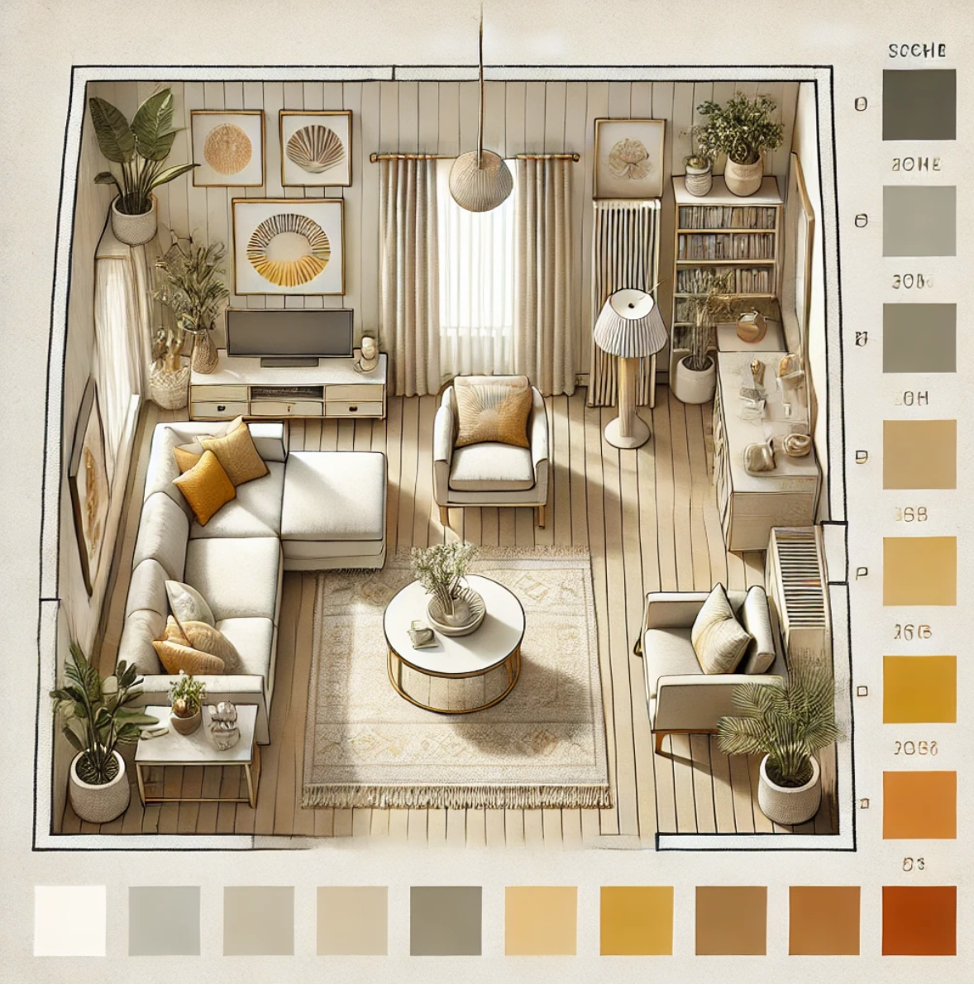
Colors in Feng Shui have a significant influence on the energy of a space. The living room should have a balanced color palette that reflects warmth, relaxation, and sociability. Depending on your goals for the space, different colors can evoke different energies.
- Neutral tones: White, beige, light grays, or soft earth tones create a calm, grounding atmosphere.
- Warm tones: Soft yellows, warm oranges, or light reds can introduce a welcoming and cozy feeling.
- Blue and green: These colors bring in tranquility and balance, perfect for a more relaxed environment.
It’s important to strike a balance between bold and soft colors. Avoid overwhelming the room with too many bold colors, but feel free to introduce pops of bright accents through decor like pillows, rugs, or artwork.
Key Tips:
- Use neutral tones for the base color to create a calming and grounding atmosphere.
- Add warm colors to enhance the welcoming and sociable energy of the room.
- Avoid using too many bright, overwhelming colors; balance is key.
5. Lighting for a Balanced and Inviting Space
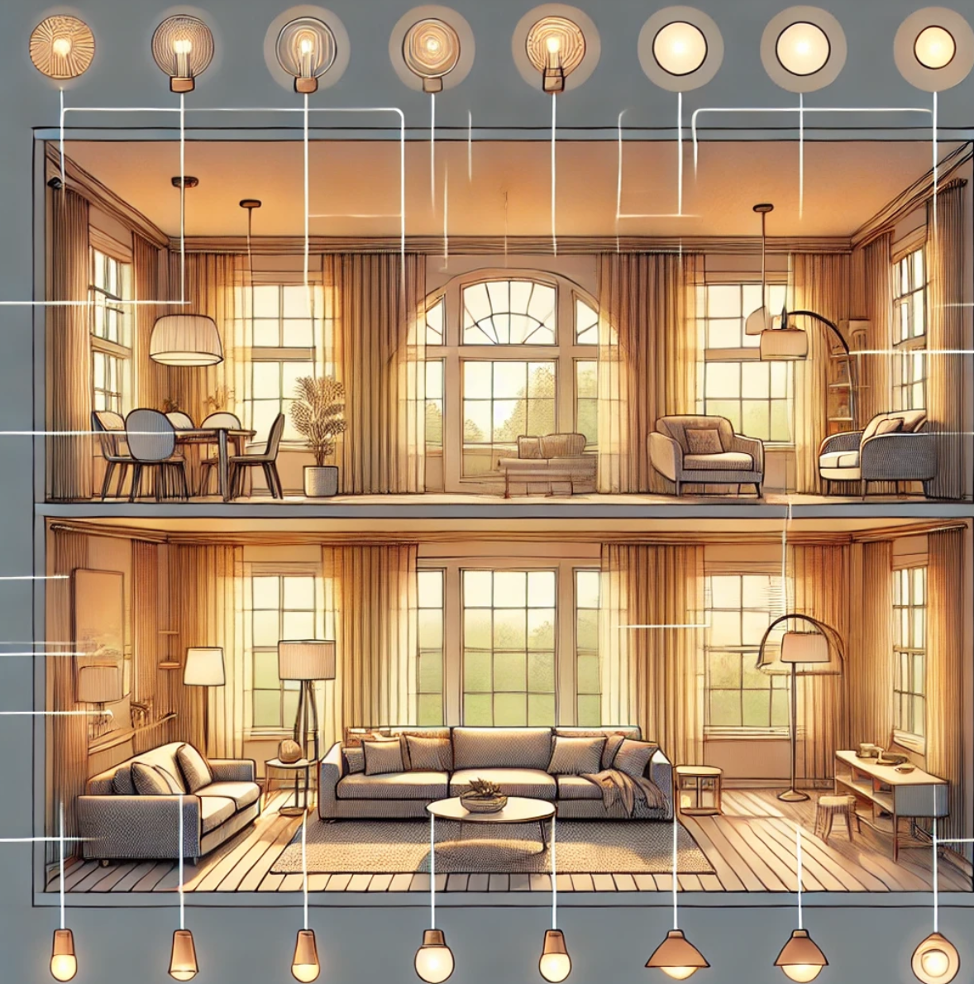
Good lighting is essential for a harmonious living room in Feng Shui. Natural light is the most beneficial, as it brings vitality and positive energy into the space. Make sure to maximize any natural light by keeping windows clean and free of heavy curtains during the day. If natural light is limited, use soft, warm artificial lighting to create a cozy and inviting atmosphere.
Layering your lighting with a combination of overhead lights, table lamps, and floor lamps will ensure the space is evenly lit and balanced. Avoid using harsh lighting, such as overly bright or cold-toned bulbs, as they can create discomfort and disrupt the calming energy of the room.
Key Tips:
- Maximize natural light by keeping windows clean and open.
- Use warm, soft lighting in the evening to create a cozy atmosphere.
- Layer lighting with overhead fixtures, table lamps, and floor lamps for balance.
6. Incorporating Natural Elements

Bringing nature into the living room is an excellent way to promote balance and harmony. Plants, especially those with rounded leaves, represent the Wood element and symbolize growth, vitality, and health. In addition to plants, other natural materials like stone, wood, and even water features can enhance the positive energy in the room.
Make sure that the plants you choose are well-maintained and healthy, as dead or wilting plants can have the opposite effect and drain energy from the space.
Key Tips:
- Use plants with soft, rounded leaves to bring vitality and positive energy.
- Incorporate natural materials like wood, stone, and water features.
- Ensure that plants are healthy and well-maintained to avoid draining energy.
7. Decluttering for a Clear and Open Space
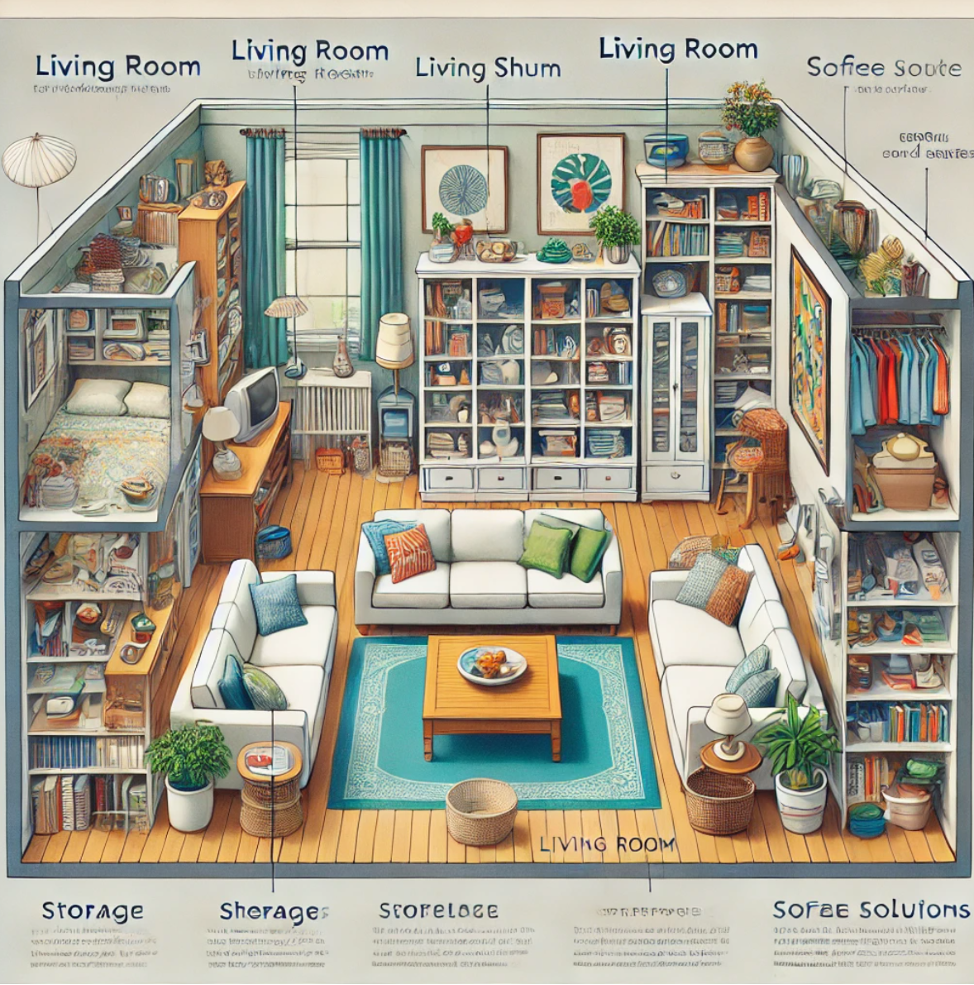
Clutter is one of the biggest obstacles to achieving good Feng Shui in the living room. A cluttered space can block the flow of energy, create distractions, and cause stress. Keeping the living room organized and free of unnecessary items will help the energy flow freely and make the room feel more peaceful and welcoming.
Invest in storage solutions such as baskets, shelves, or cabinets to keep items neatly tucked away. Regularly declutter the space, removing things that are no longer needed or used.
Key Tips:
- Keep the living room free of clutter to promote the flow of energy.
- Use storage solutions like shelves, cabinets, or baskets to maintain organization.
- Regularly declutter and remove unnecessary items to keep the space fresh.
Conclusion
Designing a Feng Shui living room layout involves more than just placing furniture and decor—it’s about creating an environment where energy flows freely and harmoniously. By following these Feng Shui principles, you can transform your living room into a welcoming, balanced space where family and friends feel comfortable and connected. Whether you’re focusing on furniture placement, color choice, or decluttering, each element works together to support a room full of positive energy, peace, and well-being.

